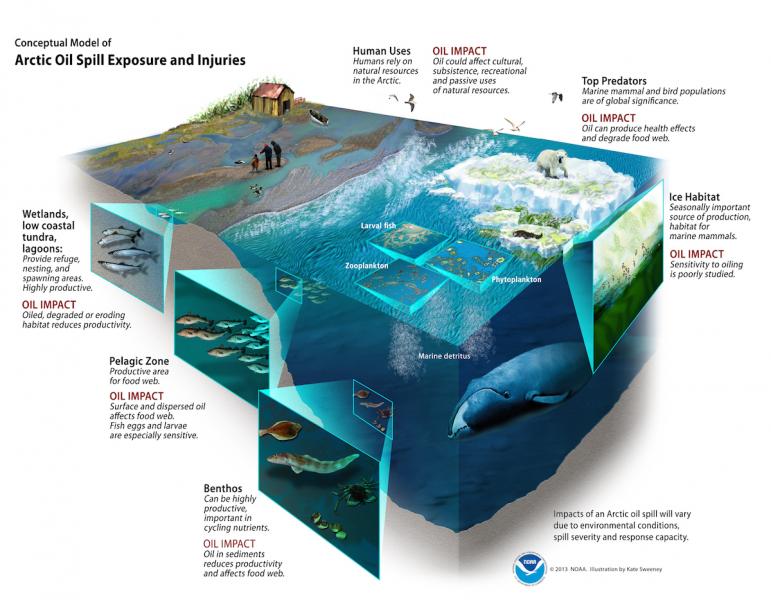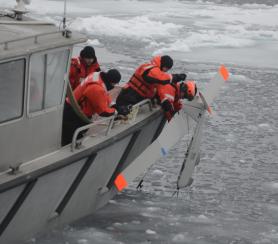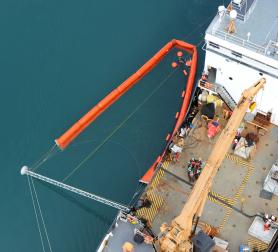Good news, bad news
As the number of ice-free days in the seas surrounding Alaska increases over time, so do opportunities. Oil and gas companies are ramping up offshore exploration and drilling in the Arctic and the shipping industry is increasing traffic around and through the region. As a result, Arctic residents may have new opportunities for jobs and development across the region.
There’s also a downside to the increased activity. Oil and gas extraction operations occasionally have accidents—events that can result in massive oil spills. Additionally, relatively rapid changes along Arctic coastlines caused by rising seas, permafrost melting, and coastal erosion can reduce the accuracy of nautical charts along the coasts. As the number of oil-powered ships traveling along these coasts increases, so does the risk of oil spills.
More bad news
Another factor makes the bad news even worse: when oil spills do occur in the Arctic, the harmful impacts can be pervasive, and the region has very little capacity to respond. Responders must travel long distances just to reach spills in remote areas. A lack of ships with appropriate cleanup equipment and rapidly changing weather conditions also interfere with efforts to respond to spills in a timely and efficient manner.
Although the Arctic may be moving toward ice-free summers, it will remain a difficult place to respond to oil spills. Low visibility, mobilized icebergs, and extreme cold make cleanup efforts difficult, and the presence of any sea ice at an oil spill site makes the task even more complex.
Oil-spill drills
Recognizing the growing threat of oil spills in the Arctic, the U.S. Coast Guard and National Oceanic and Atmospheric Administration (NOAA) have begun conducting month-long scientific expeditions—dubbed Arctic Shield—each fall. One of the goals of the expeditions is to demonstrate and evaluate tools, technologies, and techniques for dealing with Arctic oil spills. The expeditions also feature a simulated oil spill to give crews practice in cleanup procedures.
Part of NOAA's role in the annual exercise is to test the Arctic Environmental Response Management Application (ERMA®), a stand-alone GIS mapping model for use in remote locations. Both emergency responders and environmental resource managers can use the model to produce maps depicting incidents that may harm the environment. NOAA also uses unmanned aircraft systems and other new technologies to survey, identify, and monitor the extent and motion of simulated spills.
Learning through experience
Despite careful planning and long work days, the annual expedition usually encounters unexpected equipment issues, stormy weather, and human errors. Crews learn from their experiences, though, and reassess their “failures” to push their work forward. These expeditions help them recognize and implement opportunities for improvement in technology, strategies, and procedures.
Though companies and individuals involved in activities across the Arctic make every effort to prevent oil spills, history has shown that accidents will happen. The Arctic Shield expeditions help ensure that responders are ready to protect local communities, wildlife, and coastal habitats in the harsh and unpredictable conditions of the Arctic.
Adapted from "NOAA Again Joins Coast Guard for Oil Spill Exercise in the Arctic" and "Adventures in Developing Tools for Oil Spill Response in the Arctic" published on NOAA'S Response and Restoration Blog. See links to these sources in the sidebar, under Additional Resources.
Petty Officer 2nd Class Grant DeVuyst, U.S. Coast Guard. Public domain







